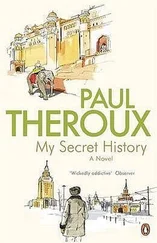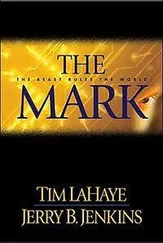The Sphinx embodies the four cardinal constellations of the zodiac, the four corners of the cosmos — Leo, Taurus, Scorpio and Aquarius, the Four Elements that work together to make the material world. The Sphinx, according to the secret history, is a monument to the first time the Four Elements locked into place and matter finally became solid.
When in the Timaeus Plato famously wrote of the World Soul being crucified on the World Body, he was not prophesying the crucifixion of Christ, as some Christian apologists have supposed. He was recalling this crucial moment in world history as idealism conceives it, when consciousness was finally fixed in solid matter.
The Sphinx, therefore, has a very special place in history as idealism tells it. It marks that point when, after wave upon wave of emanations from the cosmic mind, solid matter as we know it today was finally formed. That is why it is perhaps the greatest icon of the ancient world. The laws of physics as we know them today were only then set in motion, and from that point on the dates can be firmly fixed, because the great clock of the cosmos was finally set in its complex pattern of orbits.
If this late solidification of matter were what actually happened, it would, of course, invalidate dating methods, such as Carbon-14, conventionally used to try to establish early chronologies. Modern science makes an assumption in its calculations that the ancients did not, namely that the natural laws have held true in all places and at all times.
THE SPHINX ASKS OEDIPUS A RIDDLE: ‘What walks on four legs, then two legs, then three legs?’ If he cannot answer it, the Sphinx will kill him, but he correctly interprets it as a riddle concerning the ages of man. A baby walks on four legs, grows up to walk on two legs, until so old that a third leg, or walking stick, is needed. But ‘ages’ here is also another way of evoking the evolution of humanity. The form of the Sphinx is a monument to this evolution.
The Sphinx is defeated by the acumen of Oedipus, and casts itself into the precipice or abyss. The Sphinx’s dying is a way of showing that the gods of the elements, these organizing principles of the universe, became successfully absorbed inside the human body at this time.
Central to the Oedipal legend is the terrible fate he hoped — but failed — to avoid. He duly kills his father and becomes his mother’s lover. As the laws of nature become fixed and mechanical, humans are trapped in them.
So the Sphinx also marks the end of the Age of Metamorphosis, the fixing of the biological forms we know today. It also bars the way back. In Genesis it is one of the Cherubim who bars the way back into Eden, and the Egyptians called the Sphinx, made up of four Cherubim, ‘Hu’, meaning protector. By this they meant that he guarded against any slide back into the old ways of procreation.
It’s a common misconception that in 1650, when Bishop Usher famously calculated the date of the creation as humankind as 4004 BC, this was some last vestige of an ancient superstition. In fact Usher’s calculation was the product of a time when materialism was gaining ground — and so, too, was a narrow, literal interpretation of the Bible that would have seemed absurd to the ancients. They believed that human souls had existed for vast, immeasurable eras before 11,451 BC, and only then did the human body as we know it today fully materialize around the human spirit.
It is interesting to note that, according to the calculations of Manetho in the third century BC, this is almost exactly the time when the reign of the demi-gods came to an end.
WE WILL SEE LATER THAT, ACCORDING TO esoteric doctrine, not only was matter only precipitated out of mind a short while ago, but that it exists only for a brief interval. It will dissolve again in just over nine thousand years, when the sun rises again to meet the gaze of the Sphinx in the constellation of Leo.
In the teachings of the secret societies we live on a small island of matter in a vast ocean of ideas and imagination.

The Sphinx, which showed the Four Elements locked into place at the four cardinal points. In modern times the eminent Egyptologist R.A. Schwaller de Lubicz — protégé of Henri Matisse — was the first to reveal to a wider public that the Sphinx might have been carved before 10,000 BC. He pointed to the fact that the walls surrounding the monument show signs of water erosion that could not have been made after that time. The Sphinx, according to the secret history, is a monument to the first time the Four Elements locked into place and matter finally became solid. In 11,451 BC east, west, north and south were then locked with the Four Elements that make up the physical world.
9. THE NEOLITHIC ALEXANDER THE GREAT
Noah and the Myth of Atlantis • Tibet • Rama’s Conquest of India • The Yoga Sutras of Pantanjali
IF YOU HAVE A PASSING ACQUAINTANCE with the myth of Atlantis, you may well have been left with the impression that there is only one ancient source for this legend — Plato.
The Platonic account goes like this. Egyptian priests told Solon, a statesman and lawyer of the generation of Plato’s great grandfather, about a great island in the Atlantic that had been destroyed some nine thousand years earlier — in about 9600 BC.
The civilization on this island had been founded by the god Poseidon, and peopled by the descendants of his coupling with a beautiful woman called Cleito. (As we saw in Chapter 5, this intervention by a fish god is a coded account of evolution, common to mythologies all around the world.)
As well as the main island, this Atlantean civilization also ruled over several lesser islands in the region.
The largest island was dominated by a beautiful and fertile plain and a large hill. Here Cleito lived, and the people enjoyed food which grew abundantly on the island. Two streams of water came up through the earth, one of hot water and one of cold.
To keep Cleito for himself, Poseidon had a series of circular canals dug around the hill. In time a sophisticated civilization grew up, taming wild animals, mining metals and building — temples, palaces, racecourses, gymnasiums, public baths, government buildings, harbours and bridges. Many walls were coated with metals — with brass, tin and a red metal, unknown to us, called orichalcum. The temples had roofs of ivory and pinnacles of silver and gold.
The islands of Atlantis were ruled over by ten kings each with his own kingdom, the nine others being subservient to the ruler of the largest island.
The central temple, dedicated to Poseidon, had statues of gold, including one of the god standing in a chariot pulled by six-winged horses and flanked by hundreds of Nereids riding dolphins. Live bulls roamed freely around the forest of columns in this temple, and every five or six years the ten kings who ruled the islands between them were left alone in the temple to hunt these bulls without weapons. They would capture one, lead it up to the great column of orichalcum, inscribed with laws of Atlantis, and there behead it.
Life on the islands of Atlantis was generally idyllic. In fact life was so good that eventually people could not bear it any longer and began to become restless, decadent and corrupt, searching after novelty and power. So Zeus decided to punish them. The islands were flooded until only small islets remained, like a skeleton sticking out of the sea. Then finally a great earthquake engulfed all that was left in the course of one day and one night.
YES, IT WOULD MAKE THIS ACCOUNT OF the destruction of Atlantis unlikely to be true, if Plato were the only classical writer on the subject. Aristotle said of it, ‘Plato alone made Atlantis rise out of the sea, and then he submerged it again’, which has been taken to mean that Plato simply made the whole thing up. However, a little research shows that classical literature is packed with references to Atlantis, for example in the works of Proclus, Diodorus, Pliny, Strabo, Plutarch and Posidinus, and they include many elements which are not in Plato and seem to come from earlier sources — assuming, that is, that they haven’t been made up too.
Читать дальше













